Why data matters to your brand
You might be wondering what data collection and lead generation have to do with strong customer relationships. When most people hear the word “data”, they think of dry numbers, percentages, and charts.
However, that’s not what we’re dealing with here. The data you collect from your leads and customers is vivid and alive. Each scrap of information paints a picture of your customer – from how they like to shop, to their busiest time of day, and which social network they prefer.
When you collect data about potential leads, that’s valuable information which helps you reach out to them in the right way. Once a lead becomes a customer, you’ll use their data to offer great customer service and stay up to date with them.
In this article, we’ll cover some of the top strategies and apps to collect leads and customer data. We’ll also review best practices for data collection solutions, and point out some common mistakes to avoid.
Data collection matters because it helps you build and maintain a strong relationship with each customer.
What happens when lead collection goes wrong
There is a flipside to lead generation and data collection. If you collect the wrong information, fail to handle it securely, or draw the wrong conclusions… then you’ll create the exact opposite effect from what you intended.
We’ve all had the experience of searching for something online, and then being chased by bad retargeting ads for months afterward. Even Richard Dawkins, a world-famous philosopher, knows the struggle:
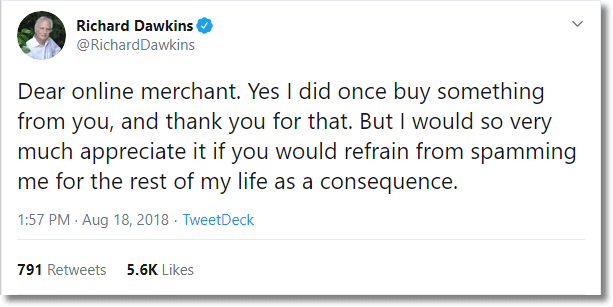
And most of us have received an email that was poorly timed, got our name wrong, or totally ignored our tastes. These experiences are annoying and frustrating. They can turn us off a brand forever.
The funny thing is, it’s not that hard to get relationship marketing right. In this blog, I’m going to cover 5 steps to better data marketing and lead collection. Here’s how to learn about your leads, give customers a great experience, and keep your marketing plan on track.
#1 Motivate your target audience to share their personal information
The data which you collect from your leads and customers has real value. So it only seems fair that people should receive something in return for their data.
Something like…
- personalized offers
- a streamlined customer experience
- advice and recommendations based on their needs
- entertainment
- exclusive information or resources
In other words, your lead collection campaign should add value for customers. People are much more likely to sign up for emails or share their details when there’s an immediate reward in it for them.
Rewards and prizes
The classic way to do this is with an Entry Form or lead ad. The consumer fills in a form with their name, contact details, and perhaps an opt-in field for emails. If you can link each entry to a social media profile, even better:
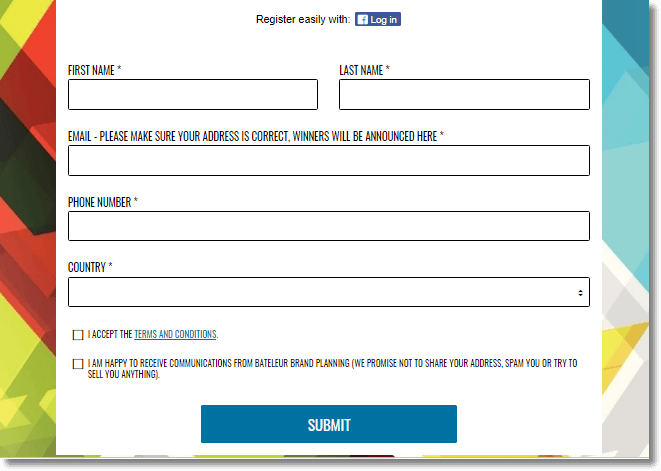
You can also create registration forms within social networks, such as Facebook Lead Ads and LinkedIn Lead Gen Forms. Instead of having their own webpage, these forms sit within the social network. However, if you want to collect lead data off social media, or want more control over the data, then a registration form app might work better for you.
Forms like this usually offer a reward such as a discount, gated content, or the chance to win a bigger prize. They’re easy, quick, and highly effective.
Interactive content
We know that people use the internet to play, learn, and connect with others. The best lead collection campaigns use this tendency. When you offer people an interactive experience, the process of data sharing becomes a reward in itself.
Imagine you’re running a Christmas-themed campaign to reach new customers and boost sales. But you know that shoppers are busy and distracted right now, so instead of serving up a plain lead ad… you give them a chance to create.
In this Christmas campaign from a travel company, the brand invited people to design a festive postcard with different stickers and backgrounds. They could download the image or share it as a holiday greeting on social media.
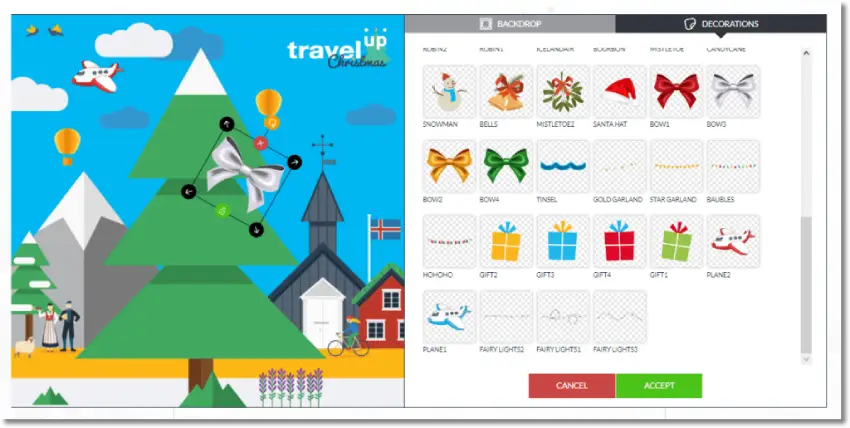
In order to play, shoppers still had to fill in an entry form, and there was a prize on offer as an extra incentive. But they also got to play with interactive content and share something fun with their friends. That was a powerful incentive in its own right.
[hubspot type=cta portal=19559696 id=597cacd6-4ec8-466f-b760-668ad10d25f2]
You can also use interactive content to share recommendations, advice, or specialist knowledge with your followers. This is a great way to add value to the customer experience and move people down the sales funnel.
For example, this restaurant created a Valentine’s Day Personality Quiz for their customers:

The quiz solved several problems at the same time. It collected lead data; it entertained guests; and, based on each person’s quiz answers, the restaurant could offer personalized menu recommendations. The different quiz questions make it easier to segment, score and qualify leads for future marketing, too.
We’re seeing more and more Product Recommenders on social media and in email marketing campaigns. Find out more about this type of interactive content.
#2 Follow best practices for data management
So you’ve created a great data collection campaign. The leads are flooding in, sharing information about their contact details, shopping preferences, and demographics.
Do you have the right policies in place?
Every country has different rules about how to collect, handle, and store sensitive personal data. The European Union sets the gold standard here, with its GDPR legislation, but other countries are quickly catching up.
It’s important to check your local standards, but here are some basic points to keep in mind:
- Make sure data is stored securely and can only be accessed by the right people.
- Publish a privacy policy and cookie policy on your website.
- Publish terms and conditions for every lead collection campaign or promotion.
- Always get explicit consent before adding someone to your email list.
- Always include a physical mailing address in your email footer.
- Make it easy for people to unsubscribe from emails or delete their data.
Some brands ignore these best practices, because they want to hold onto data at any cost. But they’re making a mistake.
When you demonstrate that consumers can trust you and that you respect their privacy, then your brand will reap the benefits. People buy more from the brands that they trust. They’re also more loyal to trustworthy brands, and more likely to recommend the brand to their friends.
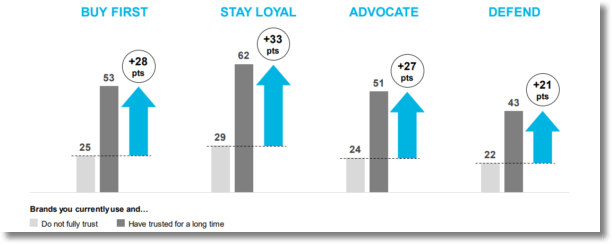
It’s also important to remember that not everyone wants a personalized customer experience. Lizzie Bruce has written a great article about why sharing data just doesn’t work for her. Most consumers are happy to share data in return for a great experience, but you should respect the exceptions.
#3 Focus on key data for lead collection
In the previous point, we talked about best practices for data collection. In any lead collection strategy, it’s vital to respect your leads and their preferences.
That also means not asking for too much information. When you collect data from leads and customers, you should only collect data for which you have a specific purpose.
In other words: If you have an email newsletter up and running, then feel free to ask for email addresses. If you’re getting into SMS marketing, then you can ask for phone numbers. But you don’t get to ask for anyone’s medical history, because that’s intrusive and irrelevant.
Lots of brands make the mistake of asking for too much, too soon. This has the exact opposite of the effect you want.
For example, a few weeks ago, I came across an ebook which looked interesting. I clicked “download” and started to fill out the lead generation form.
Name? OK.
Email address? Sure, why not.
Personal phone number? I’m starting to feel uncomfortable.
Company revenue? That’s privileged information, and I’m not sure why it’s relevant.
The end result was that I didn’t download or read that ebook. And the brand missed out on a lead.
So let’s recap:
- Only ask for the information you need.
- Explain how that information will be used.
- Offer an incentive so that leads know you value their trust.
Here’s an example of a data collection promotion that got it right. They only ask for a few pieces of information, with a clear purpose, and a great reward. They’ve also made sure to include a link to terms and conditions.
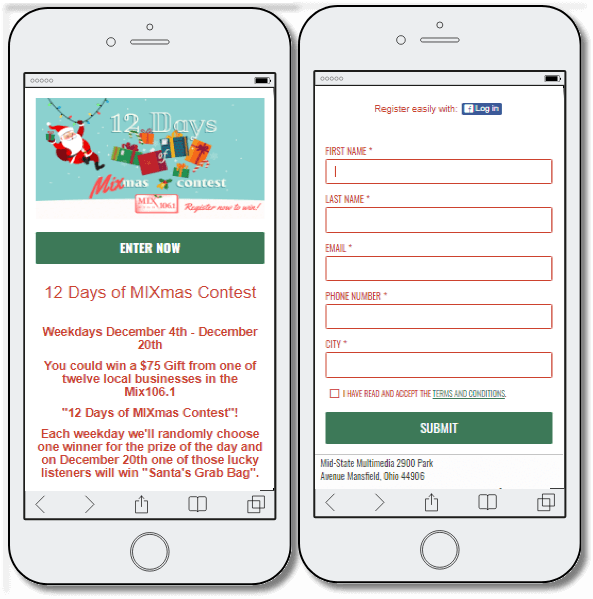
#4 Optimize for conversion
Next, let’s focus in on the user experience.
We’ve already seen that your lead collection campaigns should be rewarding and focused on essential information. A fun campaign with a solid data policy is more likely to succeed.
The design of your campaign will also make a big difference to the conversion rate. You need to make it easy for people to share with you.
So what does that look like? First of all, your promotion should be responsive. Any campaign you create should work equally well on desktop, tablets and mobiles. Bear in mind that the majority of web visits now take place on mobile!
For example, this Easter-themed game works on both desktop and mobile:
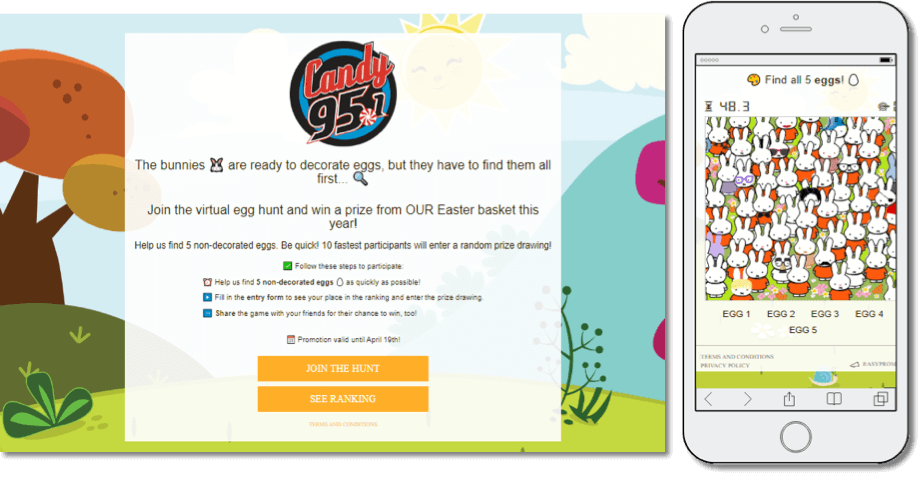
You should also consider accessibility in your campaign design. Have you added alt-text to images? Can people access the entry form with a screen reader? Is the color palette accessible for people who are color blind?
Finally, you’ll need to think about optimization for conversion. Ask yourself:
- Do people understand how to sign up, or use the interactive content?
- Are the benefits of signing up clear?
- Are you using the right tone of voice for your target audience?
- Does the reward appeal to your ideal customer?
#5 Have a strategy to develop leads
Remember when we talked about brands collecting data that they don’t need? Here’s the follow-up. There are too many brands out there collecting useful data… and then never looking at it again.
If you ask for information from your leads and customers, you have to make good use of it. For example, if you ask for someone’s name when they sign up for an email newsletter, then they should never receive a non-personalized email from you again. That’s just good manners.
Start by fitting different types of data into an overall strategy. Collecting names and email addresses is a first step in lead generation. What data will you need to score those leads? How can you collect it?
Here are a couple of sample sequences which might get you started:
Lead follows you on social media ➡️ lead signs up for email ➡️ newsletter lead fills in product recommender, sent via email ➡️ lead purchases recommended products.
Lead fills in entry form on website ➡️ lead receives exclusive content ➡️ lead fills in more detailed entry form for webinar ➡️ lead responds to follow-up email offering a product demo.
These are detailed, multi-step sequences. The journey for your ideal customer might look a bit different, but the same basic principles apply. At every step, you should demonstrate your value to the lead, and let them decide whether to take the next step.
Planning a lead generation campaign? Want to step up your data collection game? Chat with our team about your options.